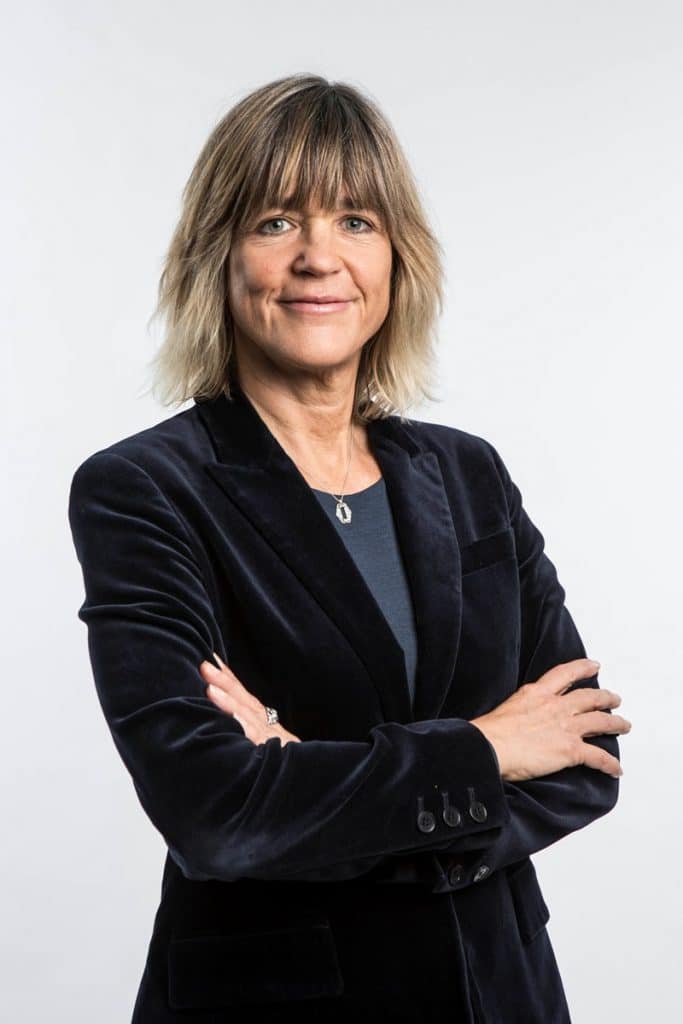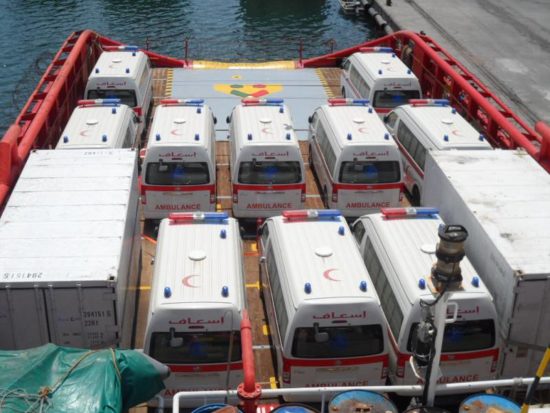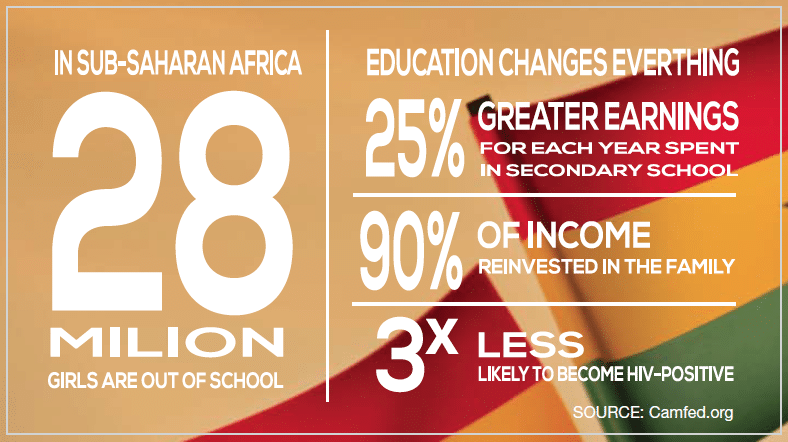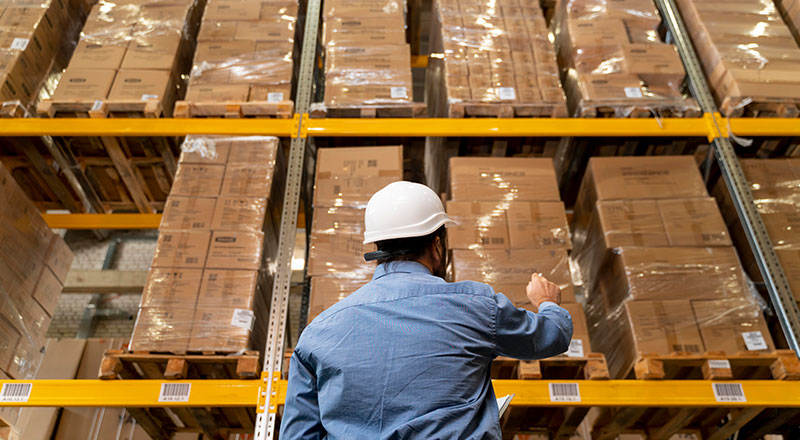Agility’s fair labor program in the Middle East was a groundbreaking initiative more than 10 years ago and has helped drive worker protections worldwide.
More than a decade ago, Agility began taking aggressive steps to protect the rights of drivers, warehouse employees and other workers who migrated in order to get jobs.
Agility is the largest logistics company in the Middle East, an area where third-country nationals have historically been vulnerable to exploitation by recruiters and to abuses on the job.
Fair labor in the supply chain
While international agencies have moved to promote fair labor practices and supply chain transparency, often after prodding by non-governmental watchdog groups, Agility has been at the forefront of efforts to ensure worker protections and call on other businesses in the region to do the same.
Agility’s initiative for fair labor
One of Agility’s first steps was ensuring a basic living wage for migrant workers. Agility also implemented procedures to prevent common labor abuses, like confiscation of passports, withholding of pay and travel restrictions. Agility’s approach to identifying and correcting fair labor practices has been in use since 2009. Since 2011, Agility has been training all levels classes of employees about those standards.
Agility’s commitment to fair labor goes all the way to the top. The company’s fair labor program is sponsored by Agility CEO Tarek Sultan, who receives regular updates on its progress from the Corporate Social Responsibility (CSR) team. “Agility is committed to providing an environment where employees’ human rights are both respected and protected. We have high standards on fair labor; it’s an essential part of the ‘Agility Way’ of doing business,” Sultan said.
The fair labor program
Agility created its fair labor program voluntarily – not in response to government or customer mandates – because the company believes in protecting its employees and contract workers. Agility isn’t winning business because it has a toptier fair labor program, but it could certainly lose business if those standards slipped, says Frank Clary, Agility’s CSR director.
Clary says the program is both a moral and legal imperative, and a company’s success in resolving fair labor issues hinges on its ability to discover them – and speak openly about correcting them.
Agility’s practices are evolving to ensure that all possible violations come to light. Agility rigorously enforces the fair labor policy with comprehensive monitoring and audits conducted by third parties. Geographic areas where the Agility workforce includes the most vulnerable population – migrant workers – get audited most frequently. The audit process includes random employee and vendor interviews, and tours of workspaces and housing. When any issue is identified, Agility prescribes corrective actions and issues timelines for achieving appropriate standards. In the case of critical issues, corrective actions are taken immediately. Customers requesting audits get the results directly.
The first phase of the Agility audit program was conducted in the Middle East, followed by roll-outs in Asia- Pacific. Ten years ago, when these audits began, many violations were discovered. Now, thanks to training programs, they have decreased.
Agility’s goal is to educate 100 percent of its workforce about the fair labor policy. The program has been conducted historically with on-site training sessions. The company is creating an online training program to reach a wider audience. There are two versions of the online program: a version designed to help employees understand their rights and learn how to report concerns, and a separate, more robust program directed at Human Resources professionals who will need to investigate those concerns.
Agility plans to share these training resources with other companies. “We want to engage to help the broader business community succeed in managing these issues,” Clary says.
Fair Labor preservation and safekeeping
There’s no quick solution to manage fair labor issues on a global scale, but every step forward helps. The Council on Foreign Relations (CFR) estimates there are 40.3 million people currently enslaved in the world, and the problem is most prevalent in “impoverished countries and [in] those with vulnerable minority communities.” Modern slavery exists primarily for financial reasons: it’s an economic crime, according to Kevin Bales, a professor of contemporary slavery at University of Nottingham in the UK. The International Labour Organization says that slavery generates $150 billion for traffickers annually. Even if companies have procedures in place to protect their workforce, how can they safeguard against unethical subcontractors who prioritize financial gain about fair labor?
Agility has taken a leadership role on the issue when it works with multinationals and government organizations in the Middle East. Working with Human Rights Watch, Agility learned how to engage engineering and construction companies in ways that prevent labor issues. The approach involves setting expectations upfront, writing contracts more carefully to demand fair labor standards, and insisting that subcontractors to open up for audits. Agility also has worked on fair labor with the World Economic Forum and Business for Social Responsibility, which has given Agility a platform to talk about the importance of the issue with others in the logistics industry.
Expert Tensie Whelan argues that sustainability as an intrinsic part of corporate DNA drives operational efficiency and innovation, and delivers a range of benefits while also mitigating risk.
Q: How do you make the financial case for sustainability?
Sustainability drives operational efficiency, innovation, employee, customer and supplier engagement, as well as mitigates risk, among other benefits. All these tangible and intangible benefits can be monetized, but generally are not, partially because accounting does not deal well with intangibles and partially because this is all so new, the corporate finance department has not yet caught up.
Q: Is the case conclusive, especially in the absence of better ROI tracking by companies?
The case for cost-based saving through operational efficiencies is very clear and has been demonstrated by companies from Walmart to 3M. Sustainability – meaning balancing environmental, social, and economic goals – has led to cost savings through reductions in waste, energy and water for thousands of companies. The social side is also beginning to demonstrate positive financial impact – Walmart’s increased pay and career path for store employees reversed the downward spiral of negative customer experiences in store, increasing sales.

Q: Is there a penalty for being late? For waiting to see how this plays out and allowing your competitors to go through painful trial and error?
There will be a penalty as this is no longer niche – it is mainstream – and the impacts are no longer in the future – climate change is disrupting supply chains now. Laggards will be penalized, if not through negative impact on their reputation, through higher operational risk and worse margins. For example, coffee farmers are experiencing lower productivity and more disease due to climate change. But changes in sustainability practices can reduce the negative impacts considerably. Companies like Nespresso that are actively engaging with their farmers to help them with these issues will ensure they have a short- and long-term supply of quality coffee.
Q: You’ve used the word “embedded” to describe sustainability in some corporate cultures. Why is that important, and what are the differences between companies where it is embedded and those where it is not?
Traditional CSR and some approaches to sustainability treat the issue as peripheral to core corporate activities. In those cases, the business strategy does not include sustainability issues such as climate change as a disrupter, and thus the impact of sustainability initiatives will be limited. Unilever’s business strategy IS their Sustainable Living Plan and it has driven significant sustainability improvements, but also outperformance by their “brands with purpose,” higher margins than their competitors, and an enviable position as one of the most searched prospective employers on LinkedIn.
Q: How does sustainability drive innovation?
Sustainability is about applying a systems and design thinking lens to traditional processes and products. You provide different design inputs (e.g. reduction of water, improved labor practices) to create products and services that reduce negative impacts and provide a better product for customers. Nike has embedded sustainability into innovation, for example, and that has driven changes in how they produce all their products (reducing environmental impact and costs) as well as led to the creation of a $1 billion plus line of product – FlyKnit sneakers.
Q: What about its importance in attracting talent?
Much of the CEO activism we have seen recently is more for the benefit of employees than customers. Companies know that millennials are looking for companies who share their values and are committed to making the world a better place. As with Unilever, they will attract the best and brightest if they embed purpose and sustainability core to their business.
Q: You’ve spoken of the need to figure out ways to “monetize” sustainability efforts within companies. What does that mean, and why is it important?
Most companies are not tracking the financial benefits of their sustainability commitments, other than cost savings such as energy use reduction. Talent recruitment, engagement and retention, for example, should be tracked in line with a company’s focus on purpose and sustainability. It is possible to monetize the contribution of sustainability to human resource metrics – SAP and PwC have tracked it, for example, and have found significant financial returns. Innovation in processes is another area – companies are innovating new processes in response to sustainability commitments. Domtar, a pulp and paper company, developed a fertilizer from the waste of two plants that had been deposited in landfill previously – a nice circular solution that saved them money and also saved the farmers money as the fertilizer cost was lower.
Q: How has thinking about sustainability been changing?
Companies have been on an evolutionary path, starting with a niche approach, e.g let me try making a green product, to a broader risk management approach, e.g. I need to manage for reputational and operational risk in my supply chain, to a mainstream approach, e.g. this needs to be core to my business, to an innovation approach, e.g. this creates new business opportunities.
Q: How does the calculus differ for B2B companies, vs. those selling to consumers?
Brands in industries such as consumer packaged goods have more pressure on them in terms of reputational risk. But they are passing that down through the supply chain, so B2B companies that are leaders will be able to achieve preferred supplier status and create better relationships with their clients. That said, B2B salespeople are not always well-trained in the sustainability attributes of their products and thus don’t feel comfortable talking about them. That will need to change.
Q: What do you see happening in emerging markets and developing economies?
In my former role as president of the Rainforest Alliance, we worked with companies all over the world and found a wide variety of engagement. There were market leaders like Tata in India and Klabin and Fibria in Brazil that were far more innovative than many US and European companies. And then there were companies in complete denial.
Q: What do you make of the recent letter from BlackRock’s Laurence Fink to CEOs? Do you see it as a watershed moment? Will it change anything?
I agree with Larry Fink that the short-term shareholder focus has done a lot of damage to capitalism, people and the planet and we are facing a reckoning. We need more investors to stand up and require that companies manage for all material stakeholders and ESG issues. And we need to delink executive compensation from delivering on high quarterly margins to the detriment of R&D, employees and the environment.
Q: EcoVadis says companies are shifting focus toward social/labor and business ethics, and going into “maintenance mode” or decreasing investment on the environmental side. Do you agree?
No, I don’t agree. I think companies in the US have been more focused on the environment to date, and they are now playing catch up on the social side, as they should. There are new environmental commitments every day – McDonalds just announced recycling goals in restaurants as well as a commitment to 100 percent recyclable packaging, for example. This is a not an either/or proposition. Companies will need to perform well on material social and environmental metrics. Right now they need to figure out their position on compelling issues that have been ignored for too long, such as employee pay and gender equity.
Q: What else is happening on the social and governance side that’s intriguing to you?
First, we had CEOs publicly state their commitment to reducing greenhouse gas emissions with science-based targets when President Trump pulled the US out of the Paris Accord on climate change. Now CEOs are stepping up on gender issues, immigration, firearms, and so on. As we have a vacuum in governmental leadership on social issues, business is taking the lead. My conversations point to personal commitment by those CEOS, and an acute attention to serving their employees who are asking for executive leadership.
Q: What are you looking for in the next five years? Ten years? What’s going to surprise us?
Just as the march by students in the United States about firearms (which took place on March 25 2018) is unexpectedly changing the dialogue on firearms policy overnight, and as with #metoo and #blacklivesmatter (movements), I think we will see a great reckoning on labor (better pay), climate and water issues in the US and globally in the next ten years. And, hopefully, we will stop looking backward, and, in looking forward, unlock ingenuity and optimism to make transformative changes in how we produce, consume and value products and services.
Blackrock, the largest investor in the world, says it’s time to consider ‘social purpose’ along with profits.
Laurence Fink, CEO of BlackRock, the world’s largest investor, astonished corporate leaders everywhere in January 2018 with a letter telling them it was time they accepted responsibility for more than profits.
Fink called for a “new model of shareholder engagement” in which companies plan and demonstrate how they make positive contributions to society. He put corporate leaders on notice that BlackRock, which has an estimated $6 trillion under management, would be watching and making its own investment decisions based on whether companies demonstrated that they were serving a “social purpose.”
Fink’s letter was a direct repudiation of nearly 50 years of accepted wisdom among business leaders. In 1970, Nobel economist Milton Friedman crystallized what has become a boardroom tenet: “The social responsibility of business is to increase its profits.”
But BlackRock, Fink explained, sees governments “failing to prepare for the future, on issues ranging from retirement and infrastructure to automation and worker retraining.” Consequently, it is up to businesses to “respond to broader societal challenges,” he wrote.
Sustainability advocates cheered. Fink’s letter “has been more than 100 years in the writing,” said Jack O’Brien, managing partner of an ethical purpose agency that, coincidentally, is named ONE HUNDRED.
The problem, O’Brien said, is that companies exposed by scandals are often the same ones with celebrated CSR programs. “These companies had CSR initiatives sitting on the periphery of corporate leadership,” he said. “Corporates (need) to look at how such ethical purpose can be brought to the center of their business, rather than resting on the sidelines.”
EXCERPTS FROM LARRY FINK’S ANNUAL LETTER TO CEOs
“Society is demanding that companies, both public and private, serve a social purpose. To prosper over time, every company must not only deliver financial performance, but also show how it makes a positive contribution to society.”
“Without a sense of purpose, no company, either public or private, can achieve its full potential. It will ultimately lose the license to operate from key stakeholders.”
“The time has come for a new model of shareholder engagement …”
“… (You) must also understand the societal impact of your business as well as the ways that broad, structural trends – from slow wage growth to rising automation to climate change – affect your potential for growth.”
“Companies must ask themselves: What role do we play in the community? How are we managing our impact on the environment? Are we working to create a diverse workforce? Are we adapting to technological change? Are we providing the retraining and opportunities that our employees and our business will need to adjust to an increasingly automated world? Are we using behavioral finance and other tools to prepare workers for retirement, so that they invest in a way that will help them achieve their goals?”
The full text of the letter is here
Sustainability is driving innovation in a variety of business areas including product reformulation and process modification.
Researchers say companies that prioritize sustainability are using it to drive innovation in product reformulation, equipment redesign and purchase, process modification, waste recycling and other areas. Notable breakthroughs on the sustainability horizon:
-
Imperial College London
post-grad students have developed a recyclable, biodegradable concrete substitute that uses abundant desert sand with half the carbon footprint in place of increasingly scarce beach and river bed sand. The substance, called Finite, can be used to make glass, computer chips and other products, in addition to concrete.
-
Plenty United
is one of many “indoor farming” startups. The company is growing lettuce, arugula, herbs and other crops in a renovated 51,000-square foot warehouse near San Francisco, using LED lights. The warehouse will yield up to 3 million pounds of leafy greens a year for local tables. Others are also looking at giant warehouses, old factories and repurposed shipping containers, equipping them with sensors that measure temperature and moisture, and fitting them with automated systems that pump in water and nutrients, and use LED strips to provide energy with no need for sunlight or soil. Plenty United employs a sponge-like plastic as a soil substitute and pumps in mineral-infused water.
Indoor farmers claim they can produce 150 times more lettuce per square foot as an outdoor farm, with just 1% of the water consumption. Their operations reuse water, avoid pesticides, and reduce fossil fuels needed to power tractors and deliver over long distances. They tend to be heavy on power consumption because of the LED lights and climate-control systems.
-
Conventional farmers
continue to incorporate technology into their work, experimenting with field sensors, geospatial imagery and analytical processing to boost yields. McKinsey says farmers using geospatial imagery can measure down to “microfields” of 14 square meters or less and better manage irrigation and fertilizer use. The same technology is being used by large commodity buyers to identify the most environmentally suitable crops based on climate, proximity to markets, global crop-yield performance and other factors. -
Graviky Labs
, an MIT Media Lab spin-off based in Bangalore, India and Singapore, has developed a device that captures particulates emitted through motor vehicle tailpipes and industrial smokestacks to manufacture ink and ink-based art products. Captured soot is processed to remove harmful metals and carcinogens, and to leave behind carbon pigment. “Many black inks are already made using carbon black, which is mostly produced by burning heavy petroleum products. That means Graviky’s process could have a twosided impact on pollution and greenhouse gases,” Fortune magazine says. Gravick Labs hopes to fit its device to bus and taxi fleets in countries such as India, where emissions standards lag behind those of Europe and the United States.

Delivering life saving aid
In 2017, Agility responded to humanitarian crises around the world, notably in Peru and Yemen where flooding and disease took a cruel toll on property and life.
Agility’s humanitarian response to weather catastrophe in Peru
Earlier this year, Agility Peru responded to the Peruvian government’s special request for aid following massive flooding caused by an El Nino weather effect. More than 10 times the usual amount of rainfall hammered the region from December 2016 through April 2017 and caused Peru’s worst floods in 30 years.
Agility is a member of the World Economic Forum’s Logistics Emergency Teams (LET). LETs mobilizes when a country requests aid for humanitarian crises that are the result of a sudden natural disaster that affects more than 500,000 people. Even though Peru did not request international aid, Agility and two other members of LETs collaborated to donate assets and resources to the Peruvian government agencies that were organizing the disaster response operations.

The northwest regions of Peru, including Lambayeque and Piura, were struck hardest by flooding. Catastrophic conditions caused by rising water and mudslides destroyed more than 14,000 homes, 700 miles of road and 200 bridges. More than 150,000 people were left displaced and in need of humanitarian assistance. With the region’s infrastructure crumbling beneath rain and mud, it was a challenge to get supplies to those who needed them.
Collaborating with the local authorities
Agility Peru coordinated with the Peruvian Ministry of Production to move food, water, shelter, medicine, clothing and other necessary supplies to the communities cut off from the economic centre of Lima. Collecting more than 400 tons of aid material from Lima, Agility Peru transported supplies to the government’s central consolidation warehouse where they could be palletised and prepared for shipment from nearby airports. Then the Peruvian military transported the goods to disaster zones for distribution.
Peruvian President Pedro Pablo Kuczynski estimated that repairs to affected regions will cost $9 billion. That figure includes both immediate repairs as well as infrastructure planning to prevent future widespread damage from excessive rainfall. Recovering from a catastrophe that has resulted in more than 100 deaths and hundreds of thousands of displaced people takes time and careful planning; immediate logistical aid helps alleviate the current devastation so a nation can keep looking forward.
“When we received the request to assist with transporting supplies to the communities devastated by flooding, our Peru team was determined to help,” said Thomas Otersen, Chief Executive Officer of Agility Chile/Peru. “Using our freight forwarding, warehousing and supply chain expertise to assist with disaster relief is a natural extension of our day-to-day business and reinforces Agility’s core values. We were drawn to this challenge by a desire to aid our Peruvian neighbors, and we knew it was our responsibility as a locally positioned global provider.”

The container would be used to transport cholera treatment medication — specifically, a lactate solution that combats the effects of dehydration — to affected populations in Yemen. The Agility Dubai ocean freight team worked with four different container vendors to identify an appropriate model. Refrigerated containers (or reefers) are generally constructed with aluminium or steel panelling encasing about four inches of insulation. Inside, a motor runs a generator that supports on-board refrigeration. Agility procured the best reefer it could find and refurbished it for the mission in Yemen.
Testing the container
Before handing over the container, the Agility Dubai team tested its quality during a three-day trial. The container would need to reach and hold a steady temperature below 20 degrees Celsius, even in the steamy Gulf summer. Agility used temperature-monitoring equipment to observe conditions inside the container. Any increase in temperature is reported in real-time updates through this system, which ensures that temperature-sensitive cargo is delivered safely.
The refurbished reefer passed the temperature test, and Agility transported it on a vessel bound for the World Food Programme’s (WFP) Djibouti hub. There, it was handed over to the Logistics Cluster and placed on a WFP-chartered cargo vessel, VoS Apollo, where it was used to keep cholera treatment medication refrigerated while in transport to Yemen.
The reefer will remain in the Port of Aden as permanent onsite cold storage, coordinated by the Logistics Cluster. The Logistics Cluster is currently supporting the humanitarian response of 42 NGOs and UN agencies in Yemen and acknowledges the importance of the reefer in the response with temperature sensitive medication and a challenging climate.
*The UN-led Logistics Cluster provides technical and logistical support to ensure delivery of relief and humanitarian assistance in the aftermath of emergencies and natural disasters. The World Food Programme, the UN’s food agency, is lead agency for the Logistics Cluster.
Agility recently partnered with the Campaign for Female Education (Camfed) to fund the schooling of 100 female students in rural Ghana in West Africa.
Camfed is an international organization that works with rural communities in sub-Saharan Africa to address the barriers marginalized girls face getting access to education and transitioning to an independent livelihood.
Thinking beyond logistics
Agility is building logistics infrastructure to support the growth of trade in Ghana. In many of the 100-plus countries where it operates, Agility has put health and education for girls and women at the center of its volunteerism and corporate contributions, particularly in Asia, the Middle East and Africa. By partnering with Camfed, Agility is making a powerful impact on the lives of some of the world’s most disadvantaged girls and their communities.
Spreading awareness and supporting education in Africa
In sub-Saharan Africa, 28 million girls are out of school, according to the Global Initiative on Out-of-School Children published by UNESCO’s Institute for Statistics. In rural Ghana, Agility’s support will cover the costs of tuition, uniforms, supplies and other items for girls whose families do not have the means to send them to secondary school.
“In the rural communities where we work, chronic poverty excludes many girls from education, especially at secondary level, where costs rise sharply, and distances to schools are much greater. Girls are so determined to access education that they put themselves at considerable risk to raise the money, heading to towns to work as street porters or maids, vulnerable to abuse and exploitation,” said Dolores Dickson, Executive Director of Camfed Ghana. “Camfed works with communities, schools, authorities and generous donor partners like Agility to rewrite the future of these girls, who then become mentors and role models for other girls.”
Agility’s work on social inclusion: Why does it matter to us?
Geoffrey White, CEO of Agility Africa, said: “Social development alongside our commercial development is important to Agility. Without it our businesses can’t grow and operate as we would wish. Social inclusion is a core value for us. Education is one of the best investments we can make to alleviate poverty and create a better world. It has an incredible multiplier effect, and it provides returns for generations.”
Research shows that better-educated women tend to be healthier, take part in the formal labor market and earn more. Data also indicate that the children of educated women benefit by receiving better health care and education.
In addition to its support of basic and secondary education, Agility is establishing training programs to groom logistics professionals and skilled warehouse and distribution specialists in Africa.



Agility’s humanitarian response to a health crisis in Yemen
Agility’s refrigerated container for medicine transportation